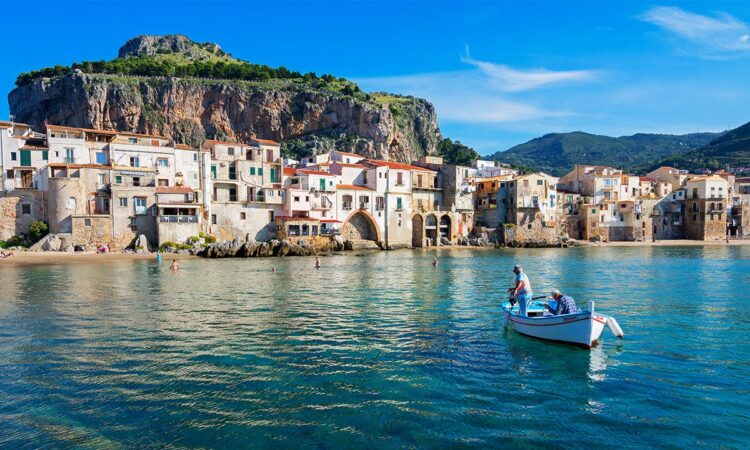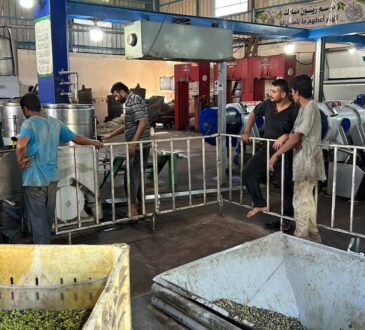
Key takeaways
- Financing an overseas home purchase can be difficult if you aren’t a citizen or resident of that country.
- While some countries allow you to take out a local mortgage, you might find it easier to use a home equity line of credit (HELOC) from a U.S.-based lender.
- On the plus side, using a HELOC to buy international property lets you keep your property in the U.S. and provides quick access to funds.
- However, your home serves as collateral for the HELOC, putting you at risk of foreclosure if you can’t repay.
When Las Vegas-based real estate investor Alicia Cramer decided to buy property overseas, she took a novel approach. Using a home equity line of credit (HELOC) based on her stateside properties, she was able to invest abroad without spending months trying to get a local mortgage or unload her domestic real estate. “The HELOC was the best way to go if I didn’t want to sell everything,” she says. “Selling everything takes time anyway; a HELOC was faster.”
Cramer is just one of many property-owners in the U.S. looking beyond domestic borders to make their next investment. Thanks to their lower cost of living and affordable real estate, places like Mexico, Costa Rica, Panama and Indonesia are some of the most popular countries luring Americans to invest, according to a trend report by Coldwell Banker Global Luxury.
If you’re interested in buying a property overseas, a HELOC can be a good option to help finance your expenses. But before you go this route, it’s a good idea to consider the pros and cons as well as alternative options.
Financing foreign real estate
Local mortgages can be difficult to secure if you’re trying to purchase a property abroad – especially if you’re not a citizen or permanent resident of that country.
Even if the country has a mortgage industry, it can be tough to find a loan with terms as favorable as you’d get in the U.S. If you do secure one, it might come with a higher interest rate and a significant down payment requirement (often 30 percent – or more – of the property’s value). You’ll also want to consider the exchange rate between the country’s currency and the U.S. dollar. If the local currency strengthens against the dollar, your mortgage costs could go up. In addition, you may be forced to invest in a life insurance policy for the mortgage amount and name the bank as a beneficiary.
In Costa Rica, for example, obtaining a mortgage as a foreign citizen can be extremely challenging, local realty firms note. And the costs can add up quickly. Down payments can range from 30 to 50 percent, and interest rates are often between 8.5 and 10 percent for a 20-year loan, according to RE/MAX Ocean Surf & Sun in Tamarindo, Costa Rica.
Add in extensive paperwork, high fees and lengthy processing timelines, and it’s no wonder that Americans decide to finance a foreign property with a homegrown HELOC.
Using a HELOC to finance property overseas: Is it a good idea?
Compared to other financing options, using a HELOC to buy property abroad has its advantages. With a HELOC, you don’t have to sell any properties in the States to fund your overseas purchases. Plus, if you have a significant level of equity in your home, you can take out a sizable sum for your international investments – and get the money quicker than you would with many other types of funding.
But is it a good idea?
“Utilizing a HELOC for an international real estate investment can be a viable strategy, but it requires careful consideration,” says Mark Damsgaard, Founder & Head of Client Advisory at Global Residence Index, a firm that helps clients invest in international real estate. “The decision hinges on various factors, such as the current real estate market conditions, the investor’s risk appetite, and the specific terms of the HELOC.”
HELOCs typically have variable interest rates, so if rates go up, so will your monthly payments. “While it provides convenient access to funds based on home equity, I often advise my investor clients to be mindful of potential currency risks and interest rate fluctuations,” says Damsgaard.
While these concerns characterize any foreign investment, there’s an additional wrinkle with HELOCs: Your home serves as collateral for the line of credit. So if you can’t repay what you’ve borrowed, you could face foreclosure.
What are the pros of using a HELOC to purchase foreign property?
You keep your home in the U.S.
If you don’t want to sell your house to buy another house, a HELOC might be a good option.
There are many reasons why homeowners would want to hang on to their home, says Shreesh Deshpande, finance and real estate chair at the University of San Diego. In this instance, a HELOC could be a good alternative to selling.
“A lot of times the scenario is that somebody is planning to retire six years from now, but they still need to live in their existing property, so they keep their house while buying a house in a foreign country,” says Deshpande. “The other thing is that people want to have one foot in the U.S. and one foot abroad. A lot of the rationale has to do with staying close to their family. They have children and grandchildren in the U.S. so they don’t want to completely move.”
Better terms and lower down payments
With HELOCs, your credit line is determined based on the equity in your home. Banks normally lend around 80 to 85 percent of the home’s value. So, if you own your home outright and it’s appraised at $500,000, the bank might extend financing up to about $400,000.
Compare that to unsecured personal loans, most of which have a maximum of $50,000. There are lenders, such as SoFi and LightStream, who will do more — as much as $100,000, in some cases.
HELOCs not only let you borrow more, they make you pay less. As of late January 2024, average HELOC rates range from 8.74 to 10.48 percent.
Personal loan rates vary quite a bit based on your credit score, but the average rate is currently 11.56 percent, and they can exceed 35 percent.
Plus, personal loans often have shorter terms, typically, one to seven years. HELOC borrowers can choose among various term limits, from 10 to 25-years. The loan is split into two periods: the draw period and the repayment period.
You become a cash buyer
A HELOC offers two things: capital and convenience. “The advantage is that the HELOC provides access to capital for the person who has a home in which he or she has significant home equity. And then they get this HELOC money to potentially invest in real estate,” says Deshpande.
Using the money from the HELOC essentially turns you into a cash buyer (as far as the seller is concerned). Being prepared to pay cash may get you a discount on the home’s sale price and or give you an advantage during negotiations.
It can also help speed up the transaction — another plus, as far as all parties are concerned. Borrowers can get a HELOC in as little as two weeks, depending on your lender and how quickly you can submit your paperwork.
More familiarity with your financing
As you may have experienced when buying a home in the U.S., applying for and taking out a mortgage can get complicated quickly. Now, imagine going through that process in a foreign country where you aren’t familiar with the real estate market, banking system, and, possibly, the language.
With a HELOC, you can feel more confident with your overseas investment, with a full understanding of your financing – including how much you have, how (and when) to repay it and where to find help if you have questions.
Cons of using a HELOC to purchase foreign property
Your home is used as collateral
HELOCs put your home on the line, literally. If you’re unable to make payments, the bank can take possession of the property.
“The bottom line is that if someone takes out a HELOC to buy an investment property abroad or wherever else, the person has increased their leverage or the amount of debt they have. So it’s definitely not reducing risk, it’s increasing risk,” says Deshpande.
Rates fluctuate
Traditionally, the interest on a HELOC accrues at a fluctuating, vs. a fixed, rate. As a result, your “monthly payments may fluctuate due to variable interest rates, akin to credit cards,” says Danny Margagliano, a Realtor with Team Margagliano in Destin, Florida. “This requires careful financial planning to mitigate potential risks.”
However, there are hybrid options that allow borrowers to pay a fixed rate on a portion of the credit line and an adjustable-rate on the remainder. Chase, for example, has a fixed-rate HELOC option which allows borrowers to switch from adjustable rates to a fixed rate during the draw period on loans of more than $1,000.
Unable to deduct the interest paid
One advantage of HELOCs is the tax break for homeowners. If using the money to buy, build or substantially improve their home, a taxpayer can deduct the paid interest on their returns each year.
But the improvements have to be on the collateralized home — the one backing the line of credit. If you use a HELOC to buy another property, the interest would not be tax-deductible.
Buying power may be limited
Of course, the amount of equity you have can dictate your buying power. Remember, most lenders are only going to let you borrow up to 80 percent of it, for starters. If you haven’t built up much equity in your home yet, it may be tricky to find a home that you can fully finance with a HELOC. In that case, you’ll need to explore other funding options.
How to use a home equity loan or HELOC to purchase foreign property
Before applying for a home equity loan or HELOC, you’ll want to make sure that you fulfill the eligibility requirements. Generally speaking, you’ll need a minimum of 20 percent equity in your home. Beyond that, most lenders expect a credit score in the mid-600s or higher, as well as steady income and a debt-to-income (DTI) ratio of 43 percent or less.
If you meet these criteria, you should be able to use a HELOC or a home equity loan (a HELOC’s fixed-rate, lump sum cousin) to buy property abroad. Generally speaking, the process will look like this:
- Shop around to compare lenders and find the most favorable loan terms and rates.
- Apply for the home equity loan or HELOC.
- Schedule an appraisal to determine the value of your home.
- Get approval from your lender.
- Close on the loan and receive the funds in a lump sum (with a home equity loan) or withdraw money as needed (with a HELOC).
Alternatives to using a HELOC or home equity loan to purchase property overseas
Overseas mortgage through your local lender
Although many lenders won’t fund a home purchase outside your home country, some will. For example, HSBC offers international banking services in select countries, and if you’re currently an account-holder, they may be able to help you secure a mortgage for international property.
If you go this route, hiring a local lawyer in the country where you’re buying might also be helpful. Before you agree to work with someone, ask about their experience with managing loans for international property and confirm that they’re permitted to practice in both the U. S. and their own land.
Retirement savings or self-directed IRA
You could tap into your retirement savings to purchase property overseas, but depending on how you do it, you may face tax consequences and other financial implications.
However, if you have a self-directed IRA, it can be a great resource to buy a house abroad and use it as a rental or investment property. In contrast to traditional IRAs, with this type of account, you’re free to invest in all kinds of assets, including domestic and international real estate. Be aware, though, that since the property is technically an investment, you can’t live in it until you reach the age when you start to receive distributions.
Developer financing or local mortgage
If you wish to buy a lot, home site or property under construction, developer financing may be an option. Fortunately, it usually comes with minimal paperwork and doesn’t require you to purchase life insurance. Depending on the country and developer, you may also lock in zero interest on this sort of loan.
Every type of developer financing is different, so read the fine print before you sign on the dotted line. Also, be sure you can repay the money you borrow with the repayment terms outlined in your contract.
You might also have the ability to take out a local mortgage to buy your new home. But as we’ve mentioned, this option often has major obstacles, depending on the country’s laws and policies. In some places, getting a local mortgage might not be possible at all.
Personal loans
Personal loans are another potential alternative to using HELOCs or home equity loans for overseas property. However, you can usually only borrow up to $50,000 (or, in some cases, $100,000) with this type of loan – and that might not be enough to buy a house abroad, even in a low-cost-of-living area.
Something else to keep in mind: You can’t use an unsecured personal loan for a down payment on a house, if you’re financing the purchase. If that’s your plan, you’d have to get a secured personal loan – and put down some type of collateral (such as a car) to get approved.
However, you could use an unsecured personal loan to augment your own funds to buy a home, foregoing financing entirely (see below).
Pay cash
If you can afford it, cash can be ideal if you’d like to buy a property overseas. It’s simple, it’s direct, and you can leverage it to negotiate the best possible price. It tends to expedite the closing process significantly, too.
Note that paying cash, however, makes the most sense if you’re buying a completed property, either pre-owned or new. You won’t want to risk your money on a project that may never materialize — especially if it’s located far away.
If you’re raising the cash by selling financial assets, like stocks or bonds, crunch some numbers first. Assess how much your investments are currently returning compared with the interest you’d pay on a HELOC. It’s also important to understand the costs involved with selling your investments. You might be on the hook for transaction fees or capital gains, which could cut into your earnings.
The bottom line on financing a property overseas
While all real estate transactions are complex, those that involve a property overseas come with an extra set of challenges. If you’re in the market for a house abroad, explore all your payment and financing options — and bear in mind that changes in currency rates can impact your overall costs significantly, both in purchasing and in maintaining your property.
Using a HELOC can be a strategic financing move. But reach out to a real estate attorney or experienced real estate professional — one specializing in overseas transactions — who can help you with the paperwork and guide you through the process. By doing so, you can protect your rights and avoid unnecessary roadblocks.




